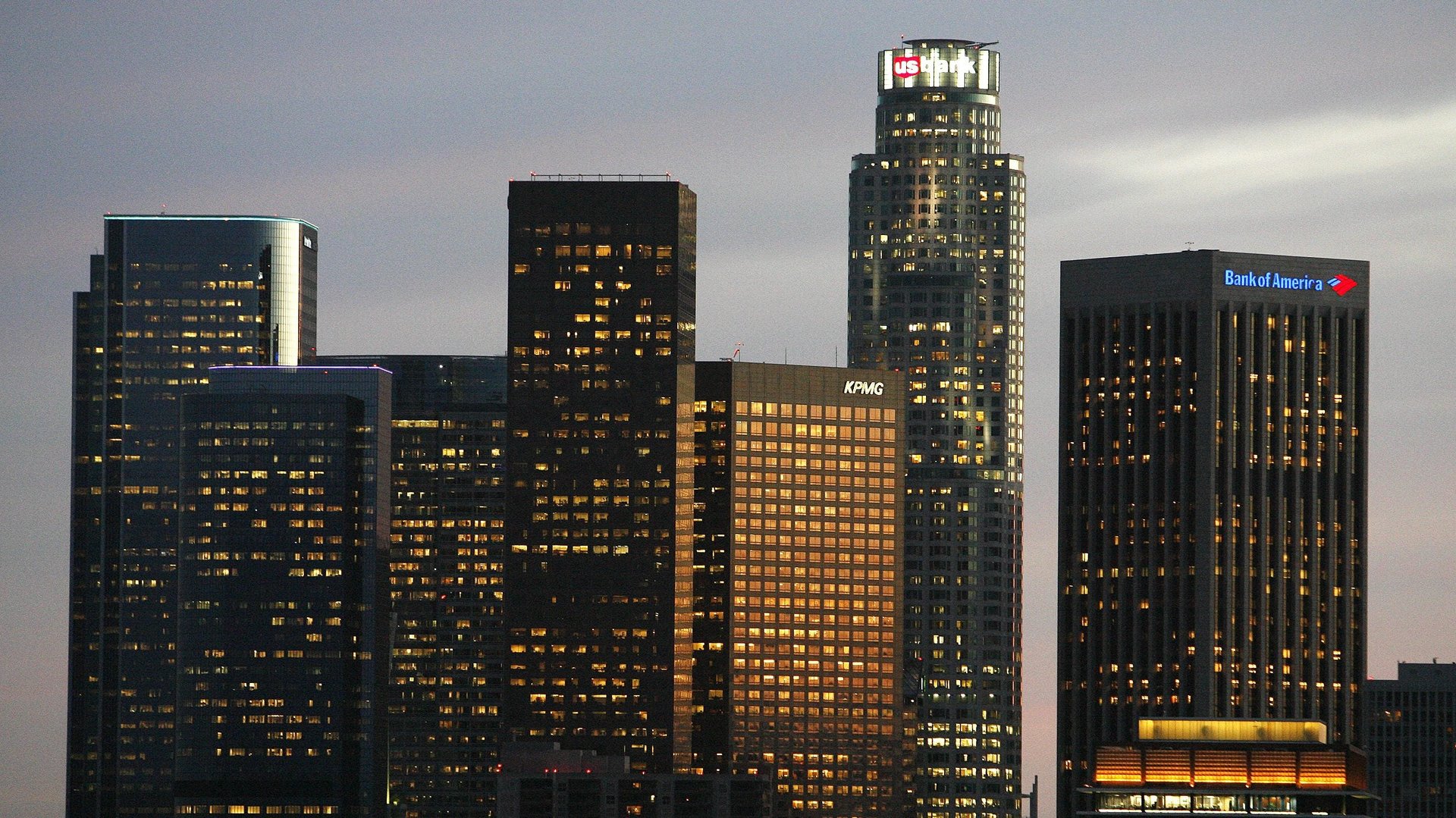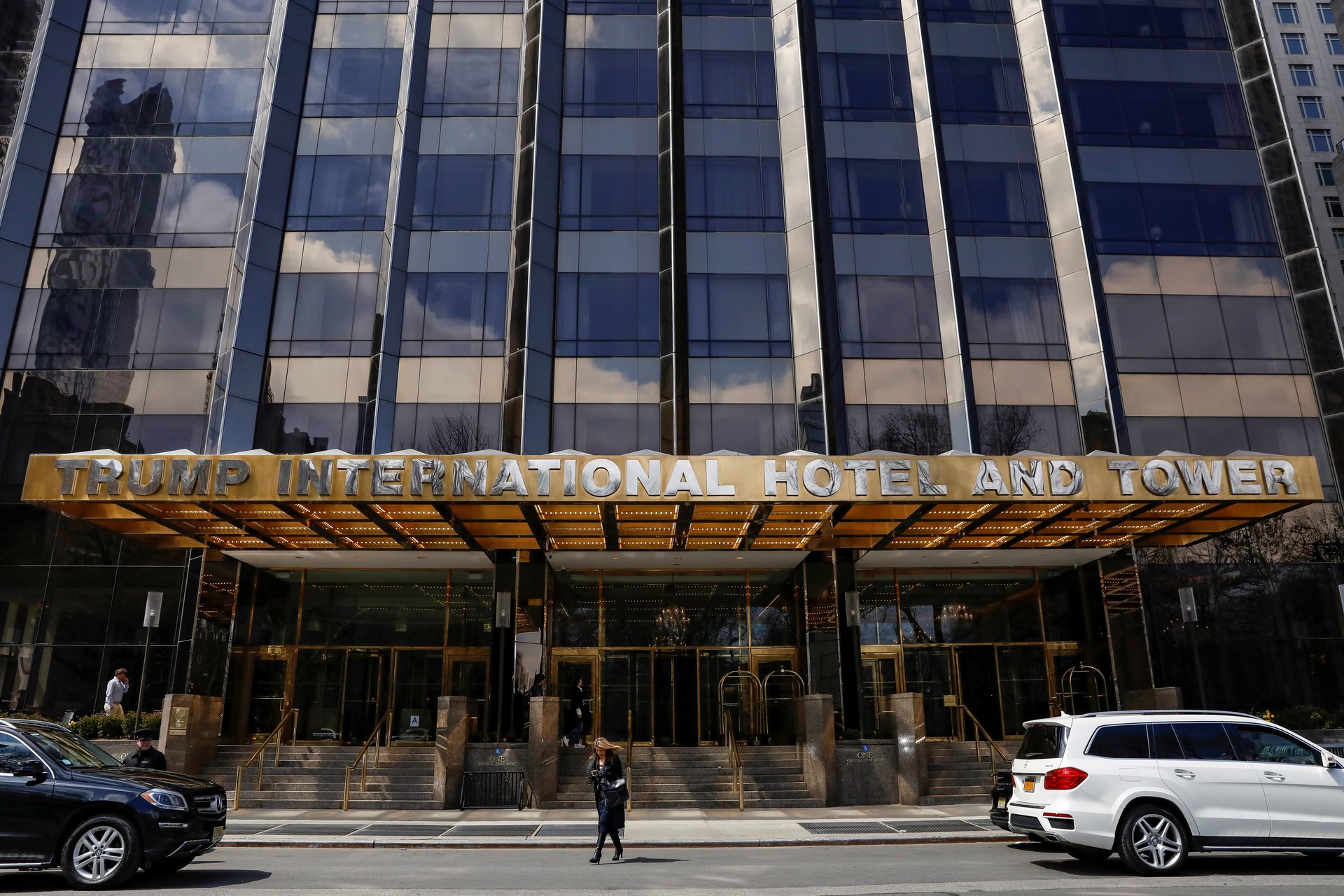What’s in store for empty downtown office buildings?
Business districts have a vacancy problem. The white-collar workers around the US who fled city centers at the start of the pandemic haven’t all come back yet. Even as some large employers like Google and Apple start to roll out back-to-office policies, it’s looking like many of them may never return.


Business districts have a vacancy problem. The white-collar workers around the US who fled city centers at the start of the pandemic haven’t all come back yet. Even as some large employers like Google and Apple start to roll out back-to-office policies, it’s looking like many of them may never return.
More US companies are embracing remote or hybrid work and shrinking their office footprint, according to poll data from Gallup. As a result, office buildings in major US cities are experiencing the highest vacancy rate for downtown offices in roughly 30 years.
In the top 10 US metro areas, downtown vacancies are 4% higher on average compared to pre-pandemic levels. In sprawling Texas cities like Houston and Dallas where office construction boomed despite a surplus of outdated buildings, offices sat empty even before the pandemic. Today, more than two years into the pandemic, roughly a quarter of downtown offices are vacant.
Remote work has reduced the role of the office
Covid-19 accelerated the trend of US workers needing less office space as the nature of American white-collar work has changed. As companies have used strategies like desk sharing and installing collaborative workspaces to use space more efficiently, the number of square feet needed per white-collar worker has steadily declined in recent decades.
That’s likely to continue. Even as business districts start to recover, Gallup estimates that 37% of current office space in the US is likely to be abandoned as workers switch to remote work. That could slash cities’ tax revenue and economic activity. A study of eight cities from the Institute on Taxation and Economic Policy found that lost tax revenue from commercial properties could lead to budget deficits of between 5% and 7%.
Faced with millions of square feet of vacant office space, cities are exploring new uses by converting office buildings. Some are targeting new condos and apartments, taking advantage of the prime location of many office buildings to increase the supply of dense housing. Other cities are creating industrial space, capitalizing on the e-commerce boom that has put a premium on warehouses. These efforts to repurpose and repopulate downtowns have the potential to upend assumptions about how to design cities.
Meeting the demand for warehouses
Urban offices are especially attractive for e-commerce companies. Because they’re already situated closer to where people live, they’re an ideal solution to last-mile delivery problems, despite increasing heavy truck traffic and other industrial activity near people’s homes. Amazon and other retailers have started scooping up warehouses in formerly industrial neighborhoods that are now residential.
Building warehouses up (not out) was already a common practice in dense places like Tokyo and Singapore. The trend is finally coming to the US as developers transform obsolete offices and retail spaces into warehouses, mostly for e-commerce goods. In 2016, warehouse industry giant Prologis built a multistory warehouse in Seattle, a first for the US. Warehouses have been converted from former office buildings in suburban Chicago and Somerset, New Jersey.
More are planned as Amazon and other e-commerce sellers scramble for more space to meet increased demand for goods from online shoppers. In 2021, typical rent prices for warehouse space in the US and Canada rose 18% from a year prior.
Converting working space to living space
Converting office buildings into condos and apartments has also been common for decades, but almost all of these redevelopments happened on a case-by-case basis. Developers got approval for a few high-profile conversions they believed would be profitable, such as iconic art deco offices in downtown Los Angeles converted to apartments in the early 2000s and the Trump International Hotel and Tower in Manhattan, previously the Gulf and Western office building.

But now, cities, often at the urging of the real estate industry, are exploring approving conversions on a larger scale. In March, New York Governor Kathy Hochul and Mayor Eric Adams have both expressed interest in converting office buildings in Midtown Manhattan to apartments. Hochul’s state budget proposal included a proposed revision to residential building law that would make it easier to convert office space. At a public hearing in March, Eric Adams’ planning chief Dan Garodnick said the administration was looking into conversions as a potential solution to create more affordable housing in the city. New York’s city council passed a law in 2022 requiring the city to “study options and make recommendations” for commercial buildings that could be converted to apartments.
A 2021 study found that converting just 10% of the area’s buildings could create 14,000 new apartments. A similar study of Los Angeles County conducted in April 2022 found that hotel and office conversions could add upwards of 72,000 units to the area’s housing supply.
The issue is that no two buildings are the same, and not all are easily converted to residences, explains Dr. Tracy Hadden Loh, a fellow at Brookings Institute Metro program. Office buildings often aren’t built with the right light and space requirements necessary to meet building code standards for living spaces like bedrooms. “A lot of these obsolete offices have weird dark spaces inside, and that means adapting them is tricky because different cities have different building code requirements,” says Loh.
This means that conversion projects can get expensive quickly. One study (pdf) of adaptive reuse projects in California found that they tended to be more expensive than new construction, and tended to encounter unexpected expenses in the building process. The redevelopment of one office building in San Francisco involved having to almost entirely rebuild the structural frame to bring it up to earthquake codes, and redo the facade because it didn’t have windows that opened.
Making office conversions easy in cities
That means mass conversion of office buildings won’t happen on their own, says Matt Vance, senior economist and head of Multifamily Research at CBRE. A combination of factors needs to come together to make these conversions profitable for developers: an attractive location and floorplan, favorable zoning laws, and up-front financing of the deal.
Vance argues local governments must help identify and finance these conversion projects. “In some ways, it seems inevitable that we’ll need to rely on a public-private partnership system,” says Vance. “[Partnerships] could make sense if they can bring people back into these areas of the city [that are now business districts], and give them a residential option and retail amenities that today’s renters are looking for.”
Momentum for conversions is growing. A report from RentCafe found that in 2021, US cities saw more than 150 apartment conversion projects, and 41% of those were from former office buildings. In all, roughly 7,400 apartment units were created from office conversions in 2021, more than six times the number of units created a decade earlier.
Adapting buildings to meet demand for how people want to use them will be a necessary part of the way cities adapt to the future. “There will be cities in the future, and those cities aren’t going to be filled with the haunted ghosts of empty office buildings,” says Loh.